Mobile Technology Drives the Need to Change Heavy Civil Construction
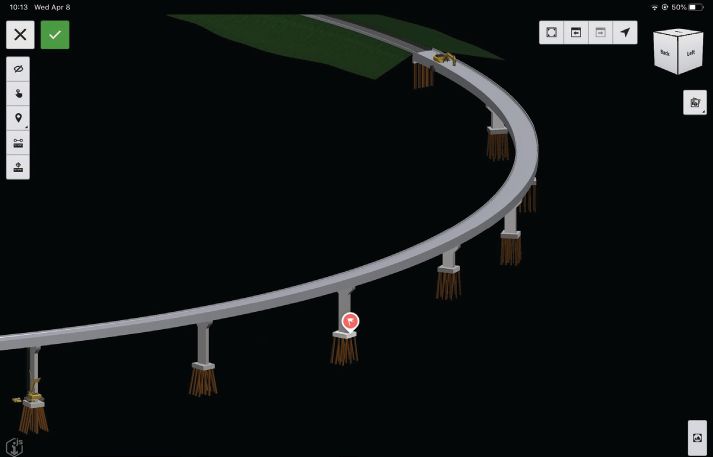
SYNCHRO Field allows users to alert the team to an issue from the jobsite, automatically adding map coordinates and linking the project issue directly to the model view with a simple workflow.
Heavy civil infrastructure projects are getting larger and more complex. As a result, more than 50 percent of projects fail to meet budget and schedule. Many factors drive such complexity, including the following:
• No two projects are the same. Each project has its own set of circumstances. Also, conditions on the job always are in flux, and someone needs to manage these changes. Often the key is delivering a project without disrupting the surrounding environment (e.g., underground utilities, roads and structures).
• Increasing expectations. Owners and the public expect more work to get done for less, while maintaining the same safety, quality and project transparency. Infrastructure failures such as the I-35W bridge collapse in Minneapolis in 2007 as well as the American Society of Civil Engineers’ D+ grade for America’s overall infrastructure have brought these issues to the forefront. In addition, owners are driving programs such as the Federal Highway Administration’s e-Construction Initiative, which is focused on digitalizing construction processes and eliminating paper on the jobsite.
• Large spatial regions. Horizontal projects spanning large geographic areas drive complex logistics that need to be managed. Imagine coordinating resources along a 10-mile highway project. It would require multiple crews and sets of equipment spread across several miles. You would have to manage the storage and movement of materials as efficiently as possible, all while minimizing the impact on existing traffic.
• Increasing size and scope of projects. As we defer asset maintenance and infrastructure demand rises, so does the size and difficulty of infrastructure projects. The slow adoption of new technology and automated processes continues to be the status quo for heavy construction. In fact, according to a recent McKinsey Report, the construction industry is one of the last to digitalize its workflows (only ahead of agriculture and hunting). The result is flat productivity while other industries are nearly doubling productivity.
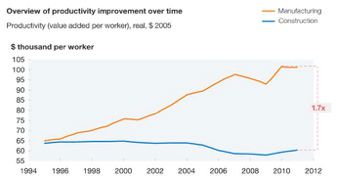
Technology to the Rescue
We know the industry needs to transform how it works. While technology has made its way into the office to automate workflows such as accounting, estimating and planning, its biggest impact could be in the field, where most operations still rely on paper and spreadsheets. The rise of mobile apps introduces a new technology platform that perfectly aligns to the needs of construction field operations. It’s poised to transform how field operations are performed to drive greater efficiencies and successful project outcomes. And the evidence is building to support these claims:
• There now are more mobile devices than people. Most field employees are familiar with mobile devices and apps because they use them daily. They’re no longer afraid of technology and have developed expectations around technology experiences that translate to their work life.
• Increasing smartphone and tablet capabilities. GPS location, sensors and cloud access make mobile devices more powerful than ever.
• People spend more time on mobile devices than PCs, which represents a change in platform as well as consumer behavior.
• Beyond the smartphone and tablet. Tying mobile applications to other machines (e.g., drones, equipment telematics and machine automation) increases the value of the platform.
• Among heavy civil contractors, 95 percent say mobile is critical to their business; 75 percent say they’re investing in mobile technology. Heavy contractors are more aware of the necessity for mobile than ever before. Stay competitive, and don’t get left behind.
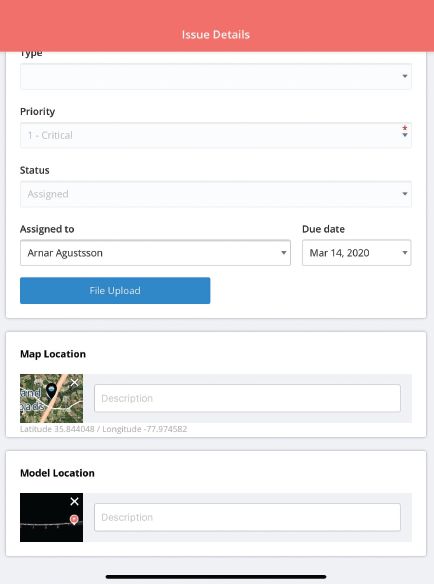
SYNCHRO Field now enables anyone out on the jobsite to pinpoint the exact location of an issue in a model view of the project, in addition to a map view. This creates immediate collaboration and the ability to raise issues with accuracy for the entire team.
The Value Proposition for Mobile in Heavy Construction
Heavy civil construction projects need to carefully manage logistics to ensure success. As previously mentioned, these projects’ complexities are driven by large amounts of resources across huge geographic regions. Three key resources need to be optimized to drive efficiencies and overall project success: people, equipment and materials.
The following framework demonstrates the advantages of web and mobile technologies on heavy civil projects:
1. Data access means putting the right data in the hands of the right people at the right time so they can be empowered to deliver the best results. Some of the problems we see with current field processes include lack of access to data in disparate systems, time-lag associated with finding information, and lack of collaboration among the field, office and shop. These problems are compounded when information isn’t structured or is captured in paper format. Leveraging the proper mobile solution unifies data in a single source of truth that’s purpose-built for the specific user and addresses the following problems:
• Automating data access by taking advantage of GPS-enabled mobile devices to deliver the information to the right people based on their location.
• Enabling real-time access and collaboration with mobile connectivity in the cloud unites the office, field and shop.
2. Data collection in the field is key to ensuring managers have the information needed to make the best decisions to ensure projects adhere to budget and schedule, all while minimizing risk due to safety and quality requirements. Today, such data often are collected with paper processes that result in errors. In addition, the time it takes to collect information distracts employees from their primary responsibility: getting work done. Therefore, moving to mobile-based processes has the following benefits:
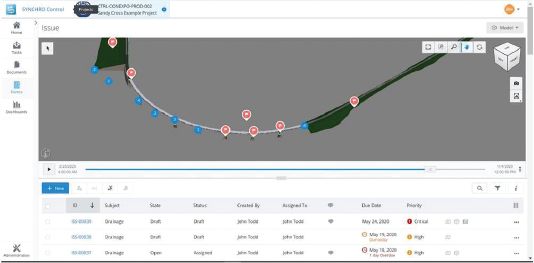
SYNCHRO Control enables construction teams to quickly find and manage all tasks by project, including field-captured data, while referencing the 4D model view.
• Real time. When people in the field are equipped with the right mobile software, they’re able to rapidly capture data that can be accessed by all stakeholders shortly after submission. Mobile solutions are easy to use and very portable, so whenever an issue arises, data are captured with a formal process that effectively turns field staff into a crowdsourced Big Data provider. Gone are the days when a foreman sees an issue, makes a note on scrap paper and puts the note in his or her pocket. It eventually makes its way back to an admin in the office for data entry (if it can be deciphered).
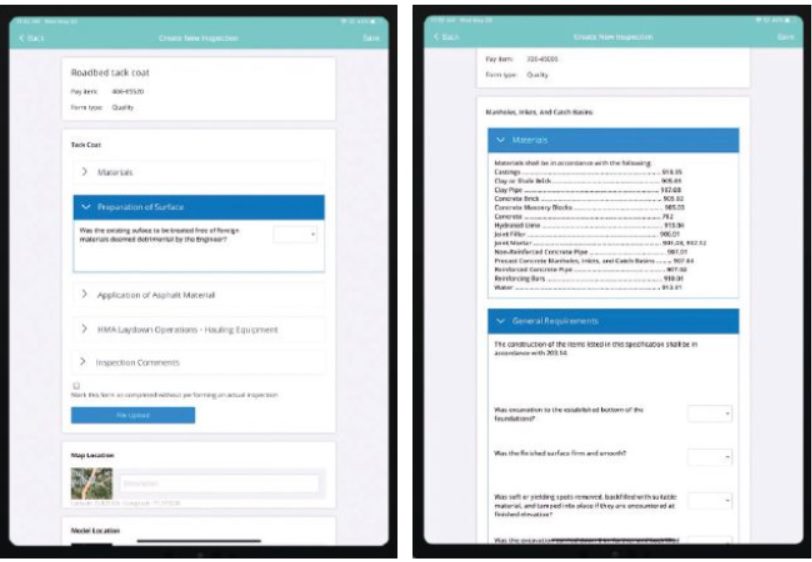
Users can easily upload the pay item tree and import DOT standard form templates. The pay item will automatically populate. The workflow then guides users through inspections, making sure any mandatory information and/or specifications are not missed
• Structured. Mobile solutions present users with a digital form that organizes how information is collected. The base expectation is a digitalized paper form, but because the information is collected digitally, mobile solutions can drive data entry consistency and accuracy. Reports and forms can automatically be augmented with metadata such as location, project, time of day, user and process. Field data become smart and get linked directly to a structured database for easy retrieval and analysis. This expands beyond the written note, sketch or photo; it can include digital notation, structured lists, linked media, electronic signatures and sensor feed data.
• Automated. Most data-collection activities are repetitive, so a mobile-technology approach can save significant time through automation, including the following:
a) Starting with a previously completed form. For example, most daily logs include redundant information. A mobile solution allows users to access an archive of daily logs so they can duplicate the previous day’s inputs and only adjust items that changed.
b) Leveraging pre-populated fields. Pre-populated dropdown lists are generated as an administrative function or directly connected to another data source such as an operational database or financial ERP system. This is advantageous for quick data selection and alignment with back-end office systems.
c) Device-sensor or cloud-connected inputs. Other real-time populated fields can come from connected devices or cloud-based feeds, including GPS location, site conditions, time/date and telematics feeds.
3. Data analysis is key to leveraging information from the field to drive better decisions around project operations and offer greater insight into the performance of the project portfolio. Moving such data to a single, digital source of truth enables better project reporting and business intelligence that helps managers quickly analyze project performance and make empowered, data-based decisions.
• Reports. Reports can be generated quickly in any form or template using software applications that leverage field data.
• Dashboards. Web and mobile dashboard views of project performance are powerful tools for managing field operations. They provide the office and field with the same views to stay aligned on daily project performance. This allows teams to uncover trends and minimize reaction time when issues arise. Real-time dashboards also can motivate field teams as they track performance against planned progress.
• Business Analysis. The sheer quantity of data being collected is both a problem and an opportunity. Leveraging an analysis tool allows managers to pull insight from historical or project data and make more-informed decisions to improve project outcomes. Such analysis can impact ongoing project execution, but it also has significant relevance when planning new projects. For example, cost management is a field-centric activity, but often a project’s learning curve isn’t captured in the office by those who bid and plan future jobs. Capturing quality progress and production-rate information means better estimates, budgets and schedules created at the project start, resulting in better planning and execution.
Business Problems and Solutions
By deploying mobile technology for field operations, heavy contractors can help mitigate specific business problems:
• Missed deadlines and budget. Various obstacles contribute to projects missing time or budget, but lack of productivity and inefficient processes are heavy hitters.
• Limited access to data. Without optimal information readily available, making the best decision on the job becomes difficult and can lead to errors or omissions during execution. If field staff aren’t empowered with the right data, they’re unable to optimize crews, which occupies them with “busy work” instead of revenue-generating work.
• Inefficient paper processes. Paper processes have been around since the dawn of civilization, but that doesn’t mean they’re the most effective way to work in today’s environment. Paper processes are slow, static, prone to error, difficult to retrieve and unstructured.
• Low-quality data with time lags. If information isn’t captured digitally, it becomes subject to errors at every step of communication, storage and retrieval. For example, when a field employee captures an issue in the field on paper, he or she carries it with them until it’s delivered to an admin responsible for transcribing the note to digital or filing it away in a paper folder, from which it’s eventually retrieved.
• Poor coordination. Issues arise when stakeholders aren’t aligned, specifically when there’s poor communication across the field, office and shop.
• Idle resources. If field crews aren’t empowered with the data they need, the result could be idle resources with no value-add. In an extreme example, a project manager requested a piece of equipment be moved from one project to another. Unfortunately, the process to communicate, plan and execute this move was manual, resulting in a water truck being moved instead of the dozer that was needed. The dozer of interest sat idle for nine months (becoming overgrown with vegetation) until it was eventually discovered.
As mobile technology is deployed in the field, we see a much different set of outcomes:
• Projects that make money. They’re run more efficiently with optimal resource utilization, resulting in projects that are delivered on budget and on time.
• Anywhere, anytime data access. People who need to access information have it available to them in real time from their mobile devices. With today’s tablets and smartphones, anytime, anywhere data access is the expectation. Mobile apps are deployed for this purpose in regard to construction operations.
• Automated workflows. Construction applications are purpose-built to solve specific workflows for specific personas, including daily logs, safety and quality inspections.
• Real-time, high-quality data. Data are collected in a consistent and structured manner.
• Coordination among the field, shop and office. Thanks to mobile applications and web connectivity, all stakeholders have access to the same information, resulting in better alignment and collaboration.
• Optimized resource utilization. Knowing the status and location of all resources in real time allows you to deploy them to the most-critical revenue-generating tasks.
Heavy contractors face many challenges to meet current infrastructure demands and drive profitable projects. To overcome these challenges, the industry needs to transform how it works by leveraging technology to digitalize and automate processes. The rise of mobile solutions introduces a new platform that’s positioned to transform how field operations are performed, driving greater efficiencies and successful project outcomes.
About Richard Humphrey
Richard Humphrey is Bentley’s Vice President of Construction Product Management; email: [email protected].


